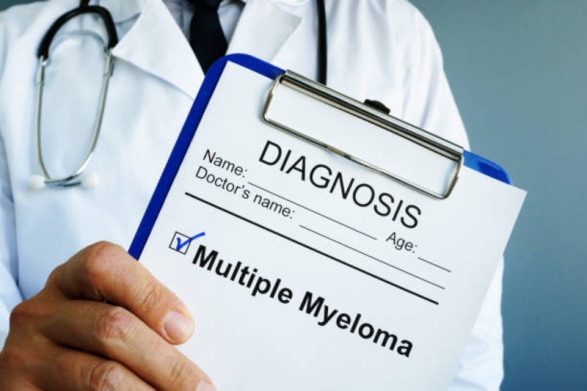Understanding Blood Cancer: A Closer Look at its 3 Main Types
Feb 14, 2024 By Madison Evans
Blood cancer is one of the less understood types of cancer, yet it impacts thousands of people across the globe every day. The term generally refers to cancers that affect blood cells and lymph nodes, such as leukemia, Hodgkin’s lymphoma and multiple myeloma. These diseases are unique in their onset and progression, making them difficult to detect early on and even harder to treat effectively. In this blog post we’ll take a closer look at these three most common forms of blood cancer—what they are, what causes them and how they can be treated. We hope that by better understanding each condition we can improve upon diagnosis rates for these diseases so more patients have access to successful treatment options earlier on in their journey with blood cancer.
Definition of blood cancer
Blood cancer is a broad term used to describe any type of malignant disease that affects the blood, bone marrow or lymphatic system. In general, these diseases are characterized by abnormal growth of cells in the body which can interfere with the normal functioning of healthy cells and organs.
Three Main Types of Blood Cancer
The three most common types of blood cancer are leukemia, Hodgkin’s lymphoma and multiple myeloma.
1 .Leukemia

Leukemia is a type of cancer that affects the white blood cells, which are responsible for fighting off infections.
Subtypes
It is generally divided into four subtypes:
- Chronic lymphocytic leukemia (CLL)
- Acute lymphocytic leukemia (ALL)
- Chronic myelogenous leukemia (CML)
- Acute myelogenous leukemia (AML).
General causes and risk factors
The exact cause of leukemia is unknown, although it is believed to be related to genetic changes. Risk factors for the disease include exposure to radiation, certain chemicals and a family history of the disease.
Symptoms
The most common symptoms of leukemia include fatigue, fever, and bruising or bleeding easily. Other symptoms such as shortness of breath, weight loss, joint pain and night sweats may also occur.
Treatment options
Treatment for leukemia typically involves chemotherapy and/or radiation therapy. In some cases, a bone marrow transplant may be recommended to replace damaged bone marrow with healthy stem cells.
2. Hodgkin’s lymphoma
Hodgkin’s lymphoma is a type of cancer that affects the lymphatic system, which is responsible for filtering out harmful bacteria and viruses from the body.
Subtypes
It is divided into two subtypes:
- Classical Hodgkin’s lymphoma
- Nodular lymphocyte-predominant Hodgkin’s lymphoma.
General causes and risk factors
The exact cause of Hodgkin’s lymphoma is unknown, although it may be related to exposure to viruses such as Epstein-Barr virus or certain types of bacteria. Risk factors for the disease include a family history of the disease and a weakened immune system.
Symptoms
The most common symptoms of Hodgkin’s lymphoma are,
- Swollen lymph nodes
- Fever
- Night sweats
- Weight loss
Treatment options
Treatment for Hodgkin’s lymphoma may involve chemotherapy, radiation therapy or a stem cell transplant. In some cases, a combination of treatments may be recommended.
3. Multiple Myeloma

Multiple myeloma is a type of cancer that affects the plasma cells, which produce antibodies to fight off infections and help maintain immunity.
General causes and risk factors
The exact cause of multiple myeloma is unknown, although it may be related to changes in the chromosomes. Risk factors for the disease include a family history of cancer and exposure to certain chemicals.
Symptoms
Common symptoms of multiple myeloma include,
- Fatigue
- Bone pain
- Frequent infections
- Anemia (low red blood cell count)
Treatment options
Treatment for multiple myeloma may involve chemotherapy, radiation therapy or a stem cell transplant. In some cases, a combination of treatments may be recommended. Other therapies such as immunotherapy and targeted drug therapy may also be used to help reduce symptoms associated with the disease.
Conclusion
Blood cancer is a complex and serious disease that can have a profound impact on patients and their families. By understanding its three main types—leukemia, Hodgkin’s lymphoma and multiple myeloma—we can strive to improve diagnosis rates for these diseases so more patients have access to successful treatment options earlier on in their journey withblood cancer. With better education, awareness and understanding of blood cancer, we can work together to make a difference in the lives of those affected.
-
 Aug 02, 2024
Aug 02, 2024Best Shampoos for Split Ends
Combat hair breakage with the best shampoos for split ends. Discover top picks for healthy hair.
-
 Oct 13, 2023
Oct 13, 2023Unveiling the Signs and Symptoms of Sciatica: An In-Depth Guide
Discover in-depth information about the signs and symptoms of sciatica, understand its causes, and find effective strategies for managing and treating this common condition.
-
 Jul 09, 2024
Jul 09, 20249 High-Protein Chicken Stir-Fries Loaded with Veggies
Explore a variety of flavorful and healthy chicken stir-fry recipes perfect for quick and nutritious dinners.
-
 Nov 11, 2023
Nov 11, 2023What is cervical cancer?
This comprehensive article provides critical insights into cervical cancer, detailing risk factors, symptoms, prevention methods, and early detection strategies to combat this life-threatening disease.
